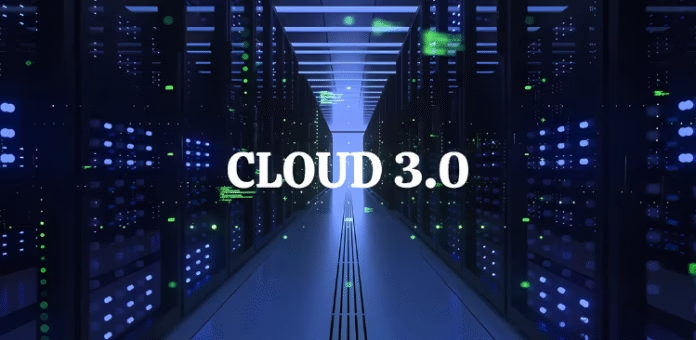The cloud isn’t what it used to be. It’s no longer just a convenient place to store data or scale compute power. It’s becoming the nervous system of the AI-first enterprise. With the rise of Cloud 3.0, organizations aren’t simply adopting tech—they’re being reshaped by it.
At the recent ETCIO Annual Conclave 2025, two heavyweight digital leaders—Ruma Kishore from Unilever and Ravi Kumar from Kotak Mahindra Bank—got candid about what it truly takes to embrace Cloud 3.0. And their message? It’s not about chasing hype. It’s about rewiring infrastructure for speed, intelligence, and resilience.
Cloud 3.0: Intelligence Over Infrastructure
Let’s be honest—terms like “multi-cloud” and “hybrid” have been around for a while. But Cloud 3.0 pushes the conversation deeper. We’re talking about embedded AI, digital twins, autonomous operations, and decision-making in real time. It’s no longer about where your infrastructure sits—it’s about how smart it is.
Ruma Kishore didn’t mince words: “Two-thirds of the planet uses a Unilever product. We can’t afford to rely on outdated systems. Cloud 3.0 isn’t aspirational—it’s operational.”
Unilever now runs SAP on Azure and sales workloads on Google Cloud. But what’s really game-changing? They’ve embedded AI-driven digital twins across over 270 global factories, turning predictive insight into everyday efficiency.
This isn’t futuristic fluff. It’s driving measurable gains—from cutting downtime to optimizing factory floors. That’s the real promise of the AI-first approach.
And yet, as Kishore wisely pointed out, “Sometimes you have to peek behind the cloud.” Because with intelligence comes complexity—and a very real need for transparency, control, and robust IT services that don’t just scale, but protect.
In Banking, Cloud 3.0 Is Survival
For Ravi Kumar, Cloud 3.0 isn’t about competitive advantage. It’s about keeping up.
“Fintechs are born in the cloud. They don’t migrate—they start fast and stay faster,” he said.
Legacy financial institutions like Kotak are under pressure to move from clunky core systems to microservices, self-healing platforms, and real-time personalization engines. In other words: it’s no longer about digital transformation. It’s about digital reinvention.
“Every UPI transaction, every digital loan journey—it’s all riding on a cloud-native, AI-ready stack. But building it? That takes courage and clarity,” Kumar explained.
Kotak is rewriting the playbook, reshaping its architecture to be cloud-agnostic, insight-driven, and aligned with India’s demanding regulatory climate.
AI at the Core: The New Competitive Edge
Here’s where things get even more interesting. Unilever is now running simulations on sunscreen melanin behavior and deodorant biomechanics entirely in the cloud. Yes, you read that right—digital R&D is becoming the norm.
“We’re cutting down physical prototyping by months. It’s faster, cheaper, and smarter,” Kishore shared.
And that’s what Cloud 3.0 does best—it compresses time-to-insight. Ravi Kumar echoed the sentiment: “If you can’t turn data into action in real time, you’re already behind.”
Whether it’s Arrow PC Network enabling secure infrastructure or IT Services by Arrow PC Network accelerating AI integration, the shift toward AI-led delivery is already shaping enterprise DNA.
Governance Is the New Differentiator
If agility is Cloud 3.0’s engine, then governance is the steering wheel.
“We’re not just dealing with code and servers. We’re operating in highly regulated sectors. RBI may not demand sovereign clouds, but they do demand control,” Kumar noted.
That means zero trust architectures, granular encryption policies, and continuous compliance checks aren’t optional. They’re foundational.
Smart companies are baking in FinOps, MLOps, and audit-ready architectures—not as afterthoughts, but as part of their core design. It’s a shift from “move fast and break things” to “move smart and stay compliant.”
The Edge Isn’t the End—It’s Part of the Spectrum
As AI moves to the edge, enterprises must rethink not just what they compute, but where. From factory floors to mobile banking apps, real-time intelligence now flows across a spectrum—from devices to core clouds.
Kishore calls this “spectrum thinking”—a blend of distributed computing and centralized control. “It’s not about pushing everything to the cloud. It’s about choosing the right layer for the right task.”
Kumar adds, “Design for change. Not just for control.” In this era, rigid systems break. Flexible ones thrive.
What CXOs Need to Ask Themselves
Cloud 3.0 isn’t a destination. It’s a mindset. And for CXOs, the playbook is evolving fast:
Is your infrastructure ready to support real-time AI?
Are your cloud systems architected with compliance at the core—not bolted on later?
Do you have the right partners—like Arrow PC Network—helping you navigate the complexity of becoming an AI-first enterprise?
Because when done right, Cloud 3.0 is more than a tech upgrade—it’s a business transformation engine.
Just Migrate—Modernize Intelligently
The message is clear: Cloud 3.0 is already reshaping how leaders build, innovate, and compete. Whether it’s Unilever collapsing R&D cycles with AI-first infrastructure, or Kotak transforming banking from the ground up—this is no longer about following the trend. It’s about leading the shift.
Enterprises that embrace this model today—supported by experienced partners like Arrow PC Network—will be the ones setting the pace tomorrow.
Because in the age of AI-first enterprises, intelligence isn’t an add-on. It’s the foundation.





